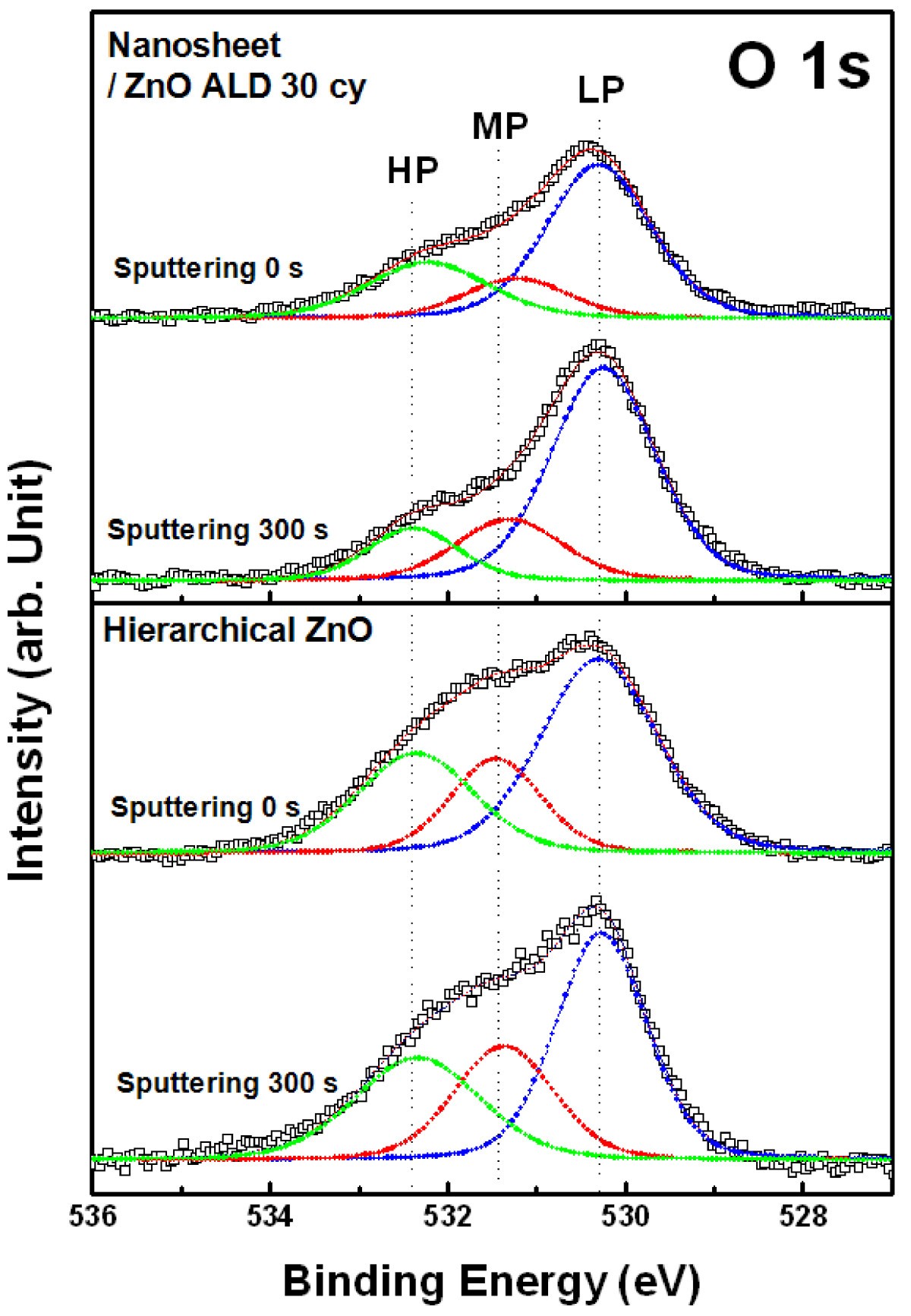

It is interesting that the same authors reported similar α′ for zinc oxide (2010.2–2010.4 eV). Deroubaix and Marcus revealed for this compound the values 2009.9 eV and 2010.4 eV. estimated for zinc hydroxide the α′ to be 2009.2 eV. It is noticeable that the values of α′ strongly vary among different literature references. In the XPS analysis, a specific marker of a chemical state of zinc in its corrosion products is the modified Auger parameter ( α′). However, the presence of both oxide and hydroxide forms and more complex structures of zinc were discussed in the literature. H 2O, wherein zinc hydroxide predominates in the chloride-containing medium.According to the literature, during exposure in chloride environment, the layer of corrosion products may be formed by compounds such as ZnO, Zn(OH) 2, ZnCO 3, and Zn 5(OH) 8Cl 2 However, the correct determination of the chemical states of the elements needs reference spectra of the expected compounds. For this purpose, X-ray photoelectron spectroscopy (XPS) is commonly used. dm −3 solution of NaCl is slow enough that the use of XRD and FT-IR techniques does not provide any information on the chemical composition of corrosion products.It was noted in own preliminary tests that the corrosion process of Zn–Fe–Mo coatings in 0.05 mol Generally, after short exposure in corrosive environment, the amount of corrosion products is often too low to be determined by X-ray diffraction, infrared spectroscopy, or Raman microscopy, and this was the problem encountered during the study of the surface composition of corroding Zn–Fe–Mo coatings. For detailed study on the corrosion of zinc and zinc alloy coatings, several analytical techniques should be used to get an insight into the bulk and the surface of the corrosion product layer. Therefore, research studies focused on the analytical determination, chemical behavior, and properties of corrosion products are essential for understanding the corrosion mechanism of zinc alloy protective coatings with molybdenum. It is well known that the layer of corrosion products can modify the kinetic of either anodic or cathodic reactions. Thanks to this, a method of obtaining Zn–Fe–Mo alloy coatings was successfully developed, and an effort was undertaken to investigate the mechanism of formation of passive layer and the layer of corrosion products. For this reason, an attempt was made to investigate the corrosion mechanism of these coatings in a solution containing chloride ions, using the following techniques: infrared spectroscopy (FT-IR), the aforementioned XPS technique, and X-ray diffraction (XRD).įurther, own research led to the replacement of cobalt(II) compounds in electroplating baths with less harmful iron(II) compounds. X-ray photoelectron spectroscopy (XPS) study revealed that the beneficial effect on the corrosion resistance of Zn–Co–Mo coatings has a passive layer which, initially, is composed of Zn(OH) 2, ZnO, Mo(IV) oxide, and hydroxide and small amounts of Co 3O 4. It has been demonstrated that the coatings with a content of about 2.7 wt.% Mo and 3.8 wt.% Co possess significantly better corrosion resistance than that of pure zinc coatings. Recent work has been dedicated to determining the corrosion resistance of bright and homogeneous ternary Zn–Co–Mo alloy coatings in NaCl solution. In the more actual research, the optimal conditions of the deposition of Zn–Co–Mo coatings have been defined. The addition of molybdenum to zinc alloy coatings with the iron group metal seems to be interesting, and even in the 80s of twentieth century was undertaken research about the addition of Mo to binary zinc alloy coatings to form ternary Zn–Co–Mo alloys. Zinc-based alloys which contain molybdenum can be the potential substitute for toxic cadmium coatings or additional Cr(VI)-based conversion coatings, due to the low harmfulness of Mo(VI) compounds present in the plating baths and the ability of molybdenum to form stable passive layer preventing chloride attack. Finally, comparison of surface composition may be crucial to evaluation of the unknown experimental spectra of corrosion products formed on the surface of zinc alloy coatings exposed in NaCl solution. X-ray photoelectron spectroscopy (XPS) allowed to calculate the modified Auger parameters ( α ′) thereof to 2010.2, 2009.3, 2009.4, 2009.7, and 2009.8 eV, respectively for ZnO, Zn(OH) 2, Zn 5(OH) 8Cl 2 Characteristic infrared absorbance bands were estimated by means of FT-IR ATR spectroscopy. Their crystalline phase structure, thermal behavior, and morphology were examined. H 2O, ZnCO 3, and Zn 5(CO 3) 2(OH) 6 synthetic powders were prepared by chemical or solid-state method.


 0 kommentar(er)
0 kommentar(er)
